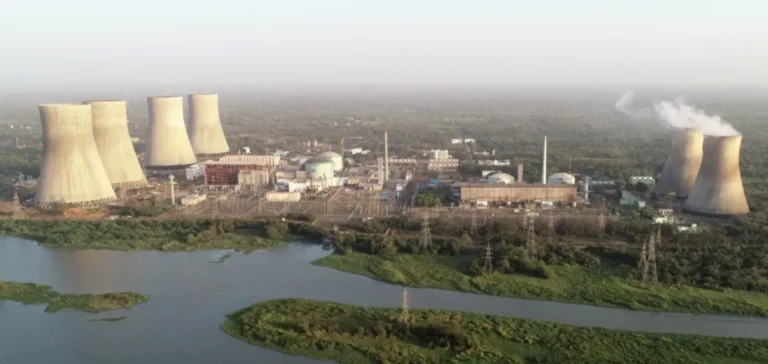The Indian government has outlined the contours of the Nuclear Energy Mission, a strategic programme aimed at raising the country’s installed nuclear capacity to 100 gigawatts electric (GWe) by 2047. This roadmap is based on the construction of new large-scale reactors and the integration of small modular reactors, while reforming the regulatory framework to facilitate sector modernisation.
Regulatory framework and accelerated procedures
Minister of State Jitendra Singh indicated that the Nuclear Energy Mission includes a strengthened regulatory system to allow for the rapid implementation of nuclear projects, whether on greenfield sites, through the conversion of existing plants, or in isolated installations. The mission also introduces measures to expand private sector participation, support research on Small Modular Reactors (SMR), and enable the introduction of advanced technologies, thus responding to the expectations of industry and authorities.
The Bhabha Atomic Research Centre is leading the development of three SMR models: the Bharat Small Modular Reactor (BSMR-200) with a capacity of 200 megawatts electric (MWe), a 55 MWe SMR, and a 5 megawatt thermal (MWt) high-temperature gas reactor designed for hydrogen production. The regulatory framework has already enabled in-principle approval for these three demonstrators, with realisation planned within the next five to six years after final administrative validation.
Modernisation of the sector and site management
The first units of BSMR and SMR will be installed at Department of Atomic Energy (DAE) sites with Nuclear Power Corporation of India Limited. These facilities are intended to operate as autonomous plants, replace end-of-life thermal power stations, or produce hydrogen for the transport sector. The evolution of the regulatory framework aims to secure investments and ensure projects comply with national and international requirements.
To date, India operates 24 reactors totalling 8,780 MWe. An additional 18 reactors, representing 13,600 MWe – including the 500-megawatt Prototype Fast Breeder Reactor (PFBR) – are under development. According to authorities, the progressive commissioning of these facilities will bring installed capacity to 22,380 MWe. The government is relying on a mix of proven and innovative technologies to reach the 100 GW target in accordance with current regulatory standards.
Focus on Gorakhpur and construction standards
Among ongoing projects, Gorakhpur 1 and 2 are receiving special attention after their administrative and financial approval in 2014. The Haryana site saw its initial works slowed by the discovery of fragile soil zones, requiring adapted technical solutions and an update of regulatory procedures. The first concrete is expected to be poured in October, while equipment procurement is progressing, with several major components already delivered on site.
The government considers Gorakhpur 1 and 2 as under construction, although according to international criteria, this status is recognised only after the main reactor building foundation concrete has been poured. Alignment with international standards and reinforcement of the regulatory framework remain priorities to ensure the compliance and safety of the entire programme.






















